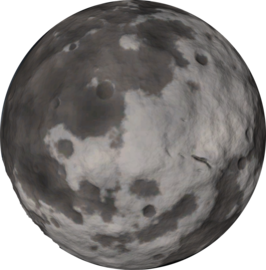Dres
Dres is the fifth planet of the Kerbol star system. It is located between Duna and Jool in a somewhat eccentric and inclined orbit. It is considered to be the Ceres analog for the game. It is similar to Moho and Eeloo in that it has no atmosphere and no natural satellites. Dres has the least gravity of any planet in the Kerbol system. While it is classified as a dwarf planet by the developers, it currently meets the IAU's definition of a planet.
In-game Description
Dres is a very small planet. It was the first planet considered to be a dwarf. Its orbit is highly irregular and, together with its size, it took a long time to discover since half the time it was not where scientists expected to find a planet. Due to its nature of frequenting the bad parts of space. This dwarf planet was officially labeled as Not to be trusted by the scientific community.
Geography
The surface of Dres appears light grey and is rocky and uneven, similar to that of Mün, with a surface covered in regolith rubble. Unlike Mün, Dres has large patches of what appears to be ice. The highest points are just under 5.7 km in altitude. One notable geographic feature is a canyon just south of the equator, which is several kilometers deep.
Cratering
The surface of Dres has several craters. However, unlike other planetary bodies, none are very prominent, the largest being slightly under 13 km in diameter. In total, 42 craters have been positively identified. Another 5 are still waiting for confirmation. The spreading of the craters is biased to the western, particularly the northwestern, hemisphere of Dres.
| Quadrant | No. of craters (%) | No. of Craters |
|---|---|---|
| North-East | 19.0% | 8 |
| South-East | 7.5% | 4 |
| North-West | 42.9% | 18 |
| South-West | 28.6% | 12 |
| Total | 100% | 42 |
Reference Frames
| Rotational/Inertial transition | 100 000 m |
|---|---|
| Warp | Minimum Altitude |
| 1× | Any |
| 5× | 10 000 m |
| 10× | 10 000 m |
| 50× | 30 000 m |
| 100× | 50 000 m |
| 1 000× | 100 000 m |
| 10 000× | 200 000 m |
| 100 000× | 300 000 m |
